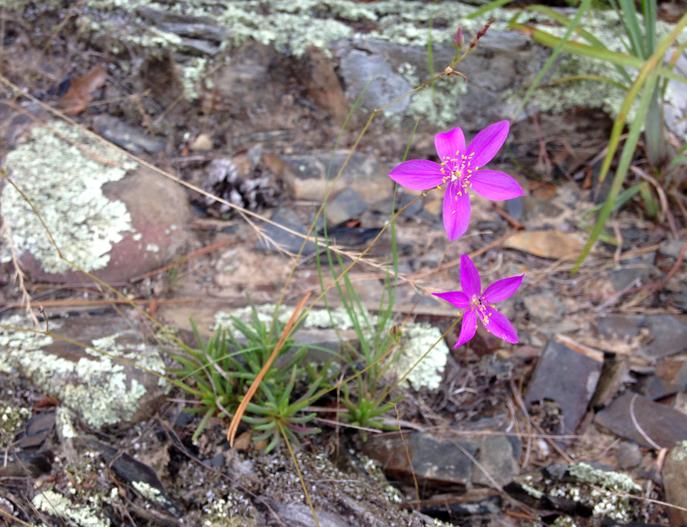Largeflower Fameflower
(Phemeranthus calycinus)
Largeflower Fameflower (Phemeranthus calycinus)
/
/

Mason Brock (Masebrock)
Public domain
Image By:
Mason Brock (Masebrock)
Recorded By:
Copyright:
Public domain
Copyright Notice:
Photo by: Mason Brock (Masebrock) | License Type: Public domain | License URL: https://creativecommons.org/public-domain/ | Uploader: Masebrock | Publisher: Wikipedia Commons




























Estimated Native Range
Summary
Phemeranthus calycinus, commonly known as Largeflower Fameflower, is a perennial subshrub or herb that is deciduous in nature. It is native to rocky outcrops, glades, and prairies in the Central and South-Central USA, extending into Northeastern Mexico. This plant typically grows to a height of 6-12 inches (15-30 cm) with a similar spread, and it forms a low, mat-like ground cover. The Largeflower Fameflower is characterized by its succulent, linear leaves that cluster at the base of the plant, and its stems are slender and wiry.
The Largeflower Fameflower is celebrated for its vibrant pink to purple flowers that bloom profusely from late spring to early fall, adding a splash of color to rock gardens and xeric landscapes. The flowers are quite showy, opening in the afternoon and closing by nightfall. This plant is drought-tolerant and thrives in full sun, making it an excellent choice for gardeners seeking low-maintenance plants. It is well-suited for rock gardens, borders, and as a ground cover in hot, dry areas. The plant requires well-drained soil, preferably sandy or gravelly, and minimal water once established. While generally pest-free, it can be susceptible to root rot if overwatered or planted in poorly draining soils.CC BY-SA 4.0
The Largeflower Fameflower is celebrated for its vibrant pink to purple flowers that bloom profusely from late spring to early fall, adding a splash of color to rock gardens and xeric landscapes. The flowers are quite showy, opening in the afternoon and closing by nightfall. This plant is drought-tolerant and thrives in full sun, making it an excellent choice for gardeners seeking low-maintenance plants. It is well-suited for rock gardens, borders, and as a ground cover in hot, dry areas. The plant requires well-drained soil, preferably sandy or gravelly, and minimal water once established. While generally pest-free, it can be susceptible to root rot if overwatered or planted in poorly draining soils.CC BY-SA 4.0
Plant Description
- Plant Type: Subshrub, Herb
- Height: 0.8-1 feet
- Width: 1.2-1.5 feet
- Growth Rate: Moderate
- Flower Color: Pink
- Flowering Season: Summer, Fall
- Leaf Retention: Deciduous
Growth Requirements
- Sun: Full Sun
- Water: Low
- Drainage: Fast
Common Uses
Drought Tolerant, Groundcover, Low Maintenance, Rock Garden, Showy Flowers
Natural Habitat
Native to rocky outcrops, glades, and prairies
Other Names
Common Names: Rock Pink
Scientific Names: , Phemeranthus calycinus, Talinum calycinum, Claytonia calycina,
GBIF Accepted Name: Phemeranthus calycinus (Engelm.) Kiger